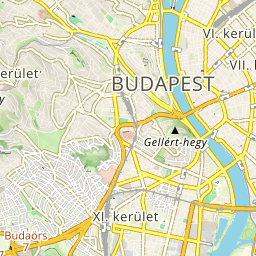Park Stage of Buda
Probably there is nobody living in Buda who has never been at Lake Feneketlen playing with their kids, picnicking, reading or jogging. They are also likely to have visited the Park Stage of Buda. Although they may have called it Bartók Stage at the time because it opened under this name in 1958 in a newly revitalized park nicknamed Youth Park as a result of the combined effort of the local Council, civil organizations, companies and inhabitants. The stage was designed by Ferenc Pálfy, Antal Studer and István Vitkovits.

2200 viewers at a time could enjoy operettas, variety shows at this legendary venue. With the arrival of beat movement in 1966 the stage became a popular concert venue for pop, rock and jazz music also. Performers uninvited were not even taken as considerable in the world of Hungarian music.
The Park Stage also served as an open air movie theatre with the largest screen in the country. It was the stage itself that could rapidly transform into a screen being the first tilting stage of the country. The special mechanism was designed and constructed by Tivadar Szendrődi and specialist of the Building Research Institute in 1961.

-

Photo: funiQ -

Photo: funiQ -

Photo: funiQ -

Photo: funiQ -

Photo: funiQ
Besides obvious benefits of the facility, extraordinary noise had brought a dislike among nearby residents. As a result of complaints the number of programs had decreased and finally in 2005 the stage was closed. Unfortunately, neglect and slow deterioration followed. Local civic organizations tried to turn it all around, e.g. organizing voluntary cleanup programs, however, the real change came only many years later, in 2015, when the stage reopened as New Buda Park Stage after an overall revitalization making it a child-, biker- and dog-friendly place.
Today the former main building serves as a counter, the orchestra pit as a sand play area and the rows of seats were replaced by seats, tables and parasols. The sense of community life remained: a place to enjoy company, drinks, foods and concerts. Future plans include an organic market as well as a handicraft market together with other various programs.
Recommended tours
A tour in the heart of Újbuda A walk around the cultural center of South Buda answers how a building was named after 500 silver coins or how a church still in use today was built on the first floor of another building, or how youngsters had fun at the Park Stage of Buda.








